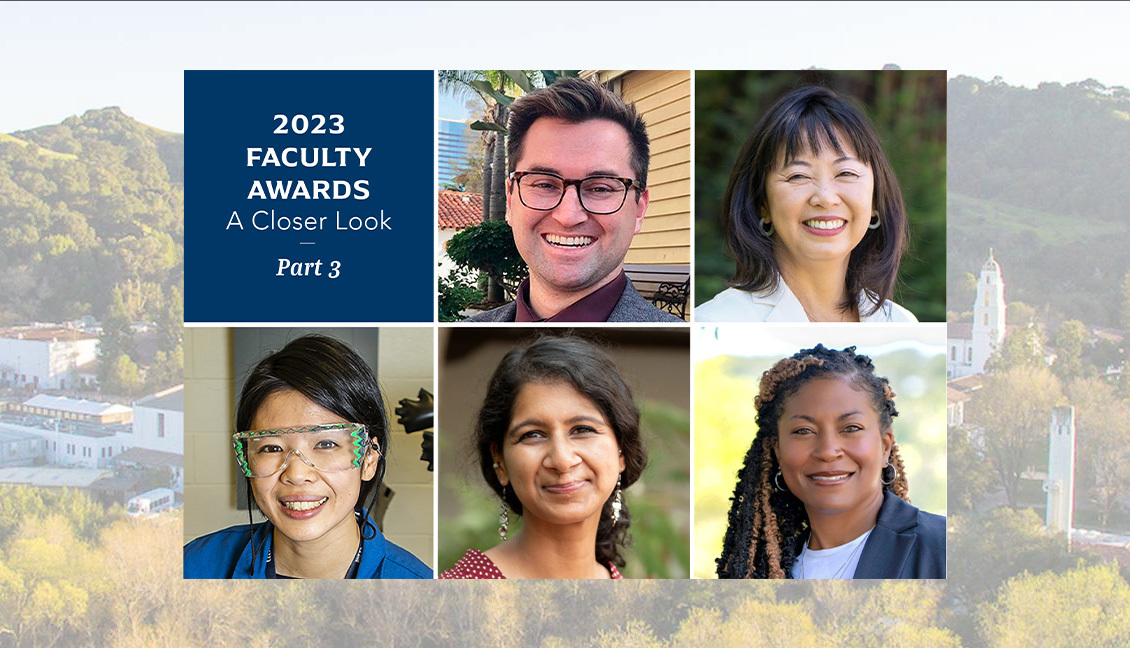
ABOVE: From top left, Dr. Jackson Battista, School of Economics and Business Administration; Dr. Loan Thi Dao, School of Liberal Arts. From bottom left, Dr. Amy Chu, School of Science; Dr. Stephanie D’Costa, Kalmanovitz School of Education; Dr. Robin Dunn, School of Liberal Arts
A Closer Look, Part Three: Saint Mary’s Researchers Earn Grant Funding, Embark on Critical Research
Meet five recipients of the Provost’s Faculty Research Grant. They tackle deindustrialization and recycling carbon dioxide. And they look at building community across generations and creating more collaborative, inclusive educational environments.
In Part Three of this “Closer Look” series, we highlight recipients of the Provost’s Faculty Research Grant. The grant program aims to advance the intellectual and creative achievement of Saint Mary’s faculty and promotes individuals toward tenure, promotion, and/or further scholarly engagement. It is supported by existing endowment funds identified for promoting academic excellence.
“These grants highlight the impact that our faculty have beyond the classroom,” said Provost and Executive Vice President Corey Cook.
“Our amazing faculty are active scholars working on significant and innovative projects that have local, national, and global impact,” Cook said. “The diversity and range of scholarship among our faculty is a testament to the dynamic research community at Saint Mary’s, including projects in the STEM fields as well as the arts, humanities, economics, education, and social sciences.
"It’s incredible work for a place our size, and these grants emphasize the importance of recognizing and investing in faculty scholarship for a vibrant intellectual community.”
Part Three of our four-part “Closer Look” series examines the forthcoming research work of five of our 11 grant recipients.
Dr. Jackson Battista, Economics Department (School of Economics and Business Administration) – “A New Economic History of Deindustrialization”
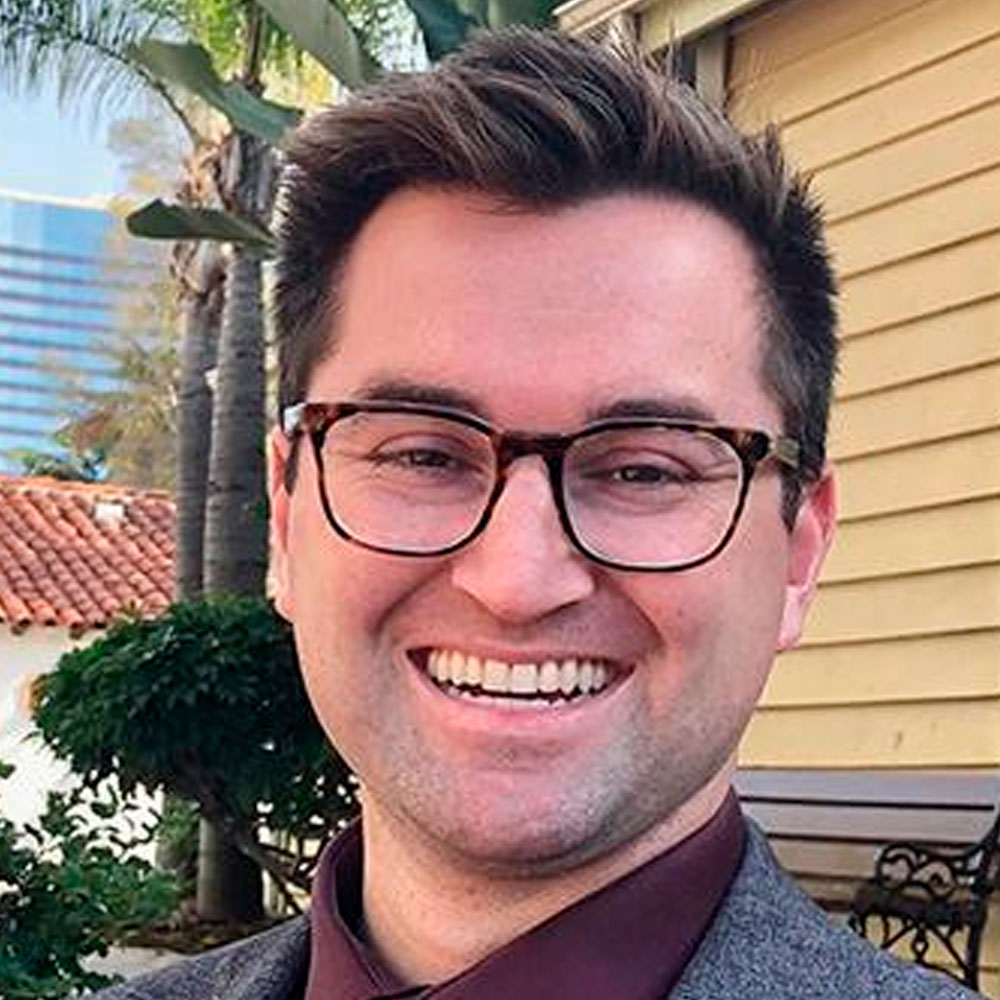
Deindustrialization—a decline in industrial activity in a particular region or economy—has frequently been viewed as a loss. As technology has advanced and productivity has increased, manufacturing jobs have often dried up. Jackson Battista’s research and the resulting book, however, aim to develop a more comprehensive narrative of deindustrialization.
Dr. Battista’s project will focus on the San Francisco Bay Area and will position deindustrialization as an integral part of capitalist development, rather than a short-term response to an external shock during a specific time period.
In re-establishing the timeline of deindustrialization, the project will focus on:
- Defining Deindustrialization
- Timing the Start of the Process
- Understanding Deindustrialization within the History of Capitalism
- Identifying a “Class Conflict” Approach to Deindustrialization
- The Effect of the New Timeline of Deindustrialization
“We’ll utilize Faculty Research Grant funds to complete two chapters of the book,” Dr. Battista said, “focusing on the driving factors of deindustrialization and the Bay Area.”
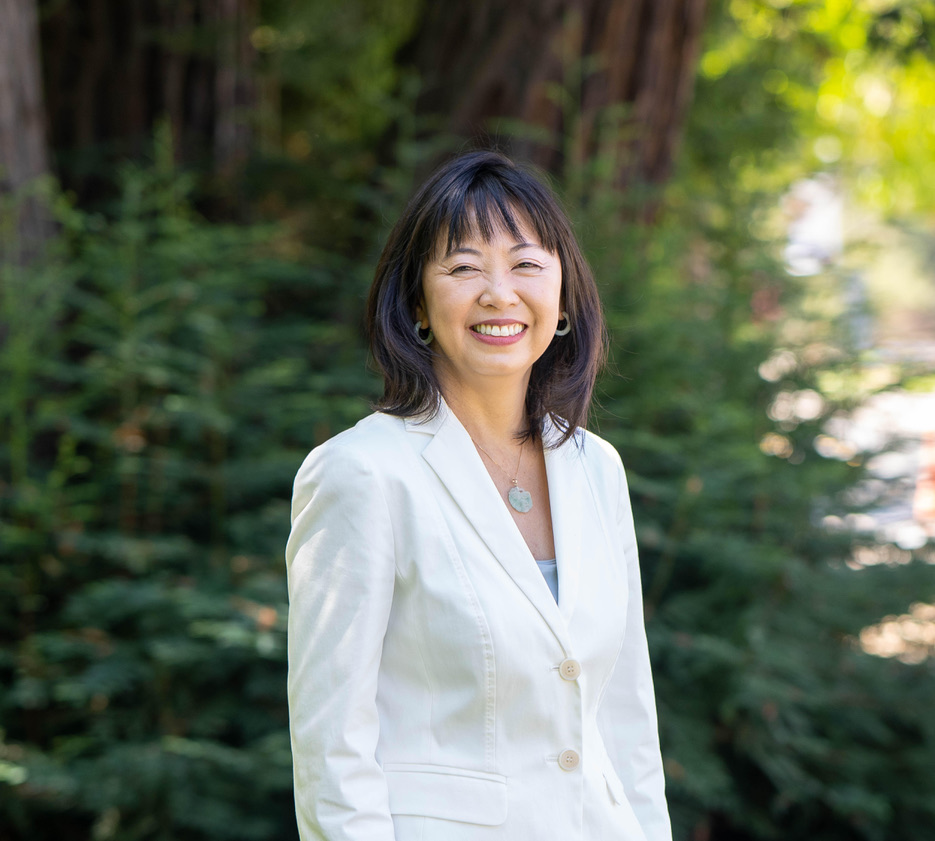
Dr. Loan Thi Dao, Ethnic Studies Department (School of Liberal Arts) – “At 50: Confluences and Changes in Little Saigon Since 1975”
As the 50th anniversary of the end of the U.S. War in Vietnam draws near, Loan Thi Dao’s project will center on oral history interviews documenting changes to the Little Saigon district in Orange County, California, considered to be the largest Vietnamese American enclave in the United States—and one of the largest such districts in the world.
Between 1975 and 1994, more than 1 million Vietnamese refugees resettled in the United States. After this initial resettlement, Vietnamese refugees created ethnic enclaves that became thriving centers of economic, social, political, and cultural practice, often named “Little Saigon” neighborhoods and communities.
Dr. Dao’s project will capture the aesthetic, cultural, and economic impact of generational transference of local businesses in the Orange County region. Grant funds will provide time and resources to conduct interviews, observe ethnographic changes, and conduct archival research of Little Saigon businesses.
“This project lays the foundation to understand the evolving generational identities of refugees from the American war in Southeast Asia that created the largest refugee immigration to the U.S. since World War II,” explained Dr. Dao. “It demonstrates the legacies of war, survival, memory, and collective hybridization to ‘shape-shift’ how communities in exile express themselves across time and space.”
Dr. Amy Chu, Chemistry Department (School of Science) – “Tuning the Reactivity of Metal Carbon Dioxide Complexes for Carbon Dioxide Recycling to Carbon Monoxide”
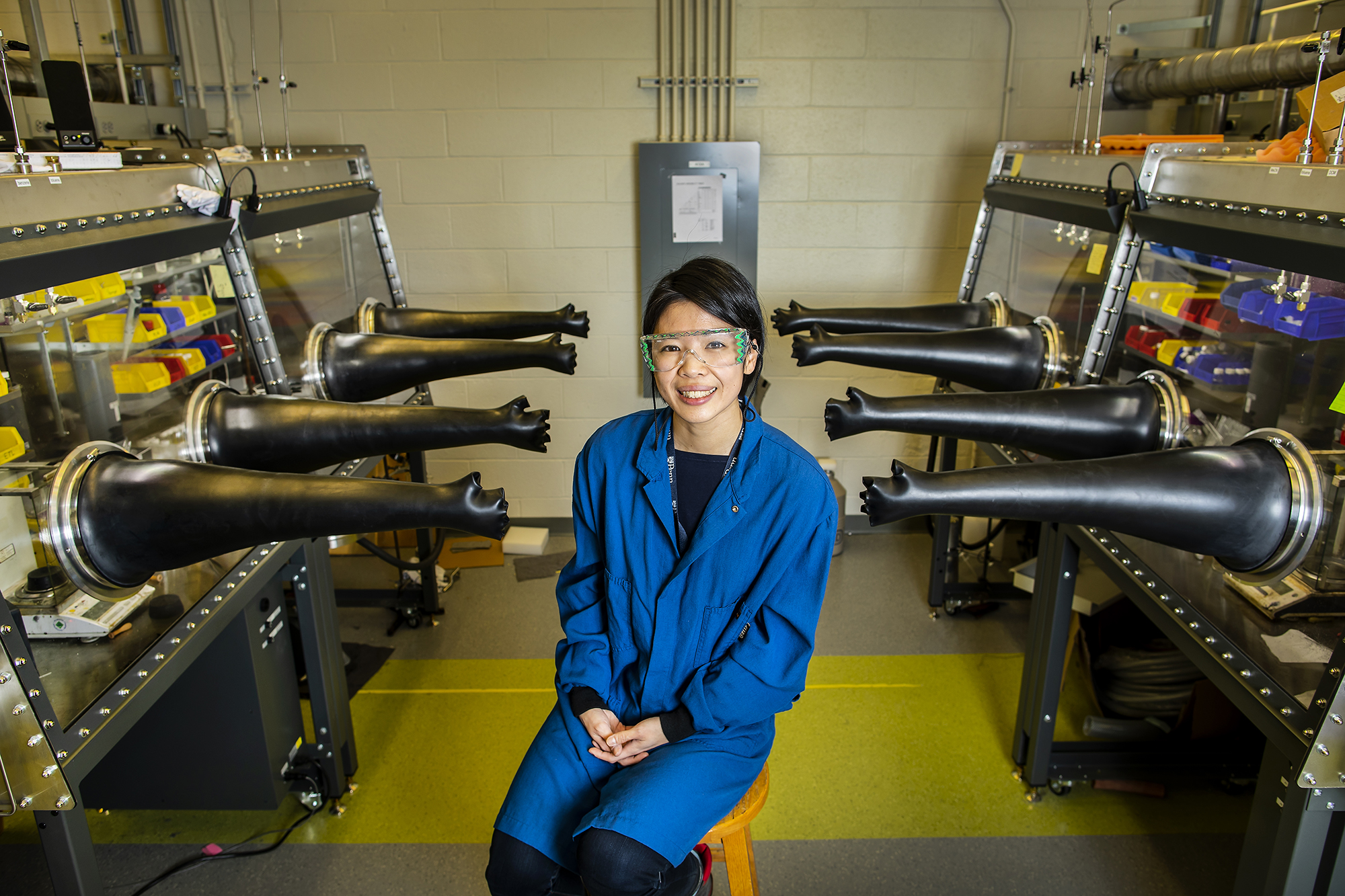
Recycling carbon dioxide has proven to be a promising strategy for efficiently managing carbon resources. With a Faculty Research Grant in hand, Amy Chu and her undergraduate research students will design metal-containing chemical compounds that facilitate this recycling strategy.
The project will explore the following questions:
- How does the change in the electronic structure of metal-containing chemical compounds affect their interaction with carbon dioxide?
- How can chemical additives be utilized to enhance the reactivity with carbon dioxide?
- How can the electronic structure and chemical additives be optimized simultaneously for the design of an efficient carbon dioxide recycling scheme?
Faculty Research Grant funds, Dr. Chu said, will allow her research group to acquire a solvent purification system, which is expected to greatly enhance the speed at which pure solvents can be obtained.
Dr. Stephanie D’Costa, Kalmanovitz School of Education – “Anti-Colonial School Psychology Learning Collaborative”
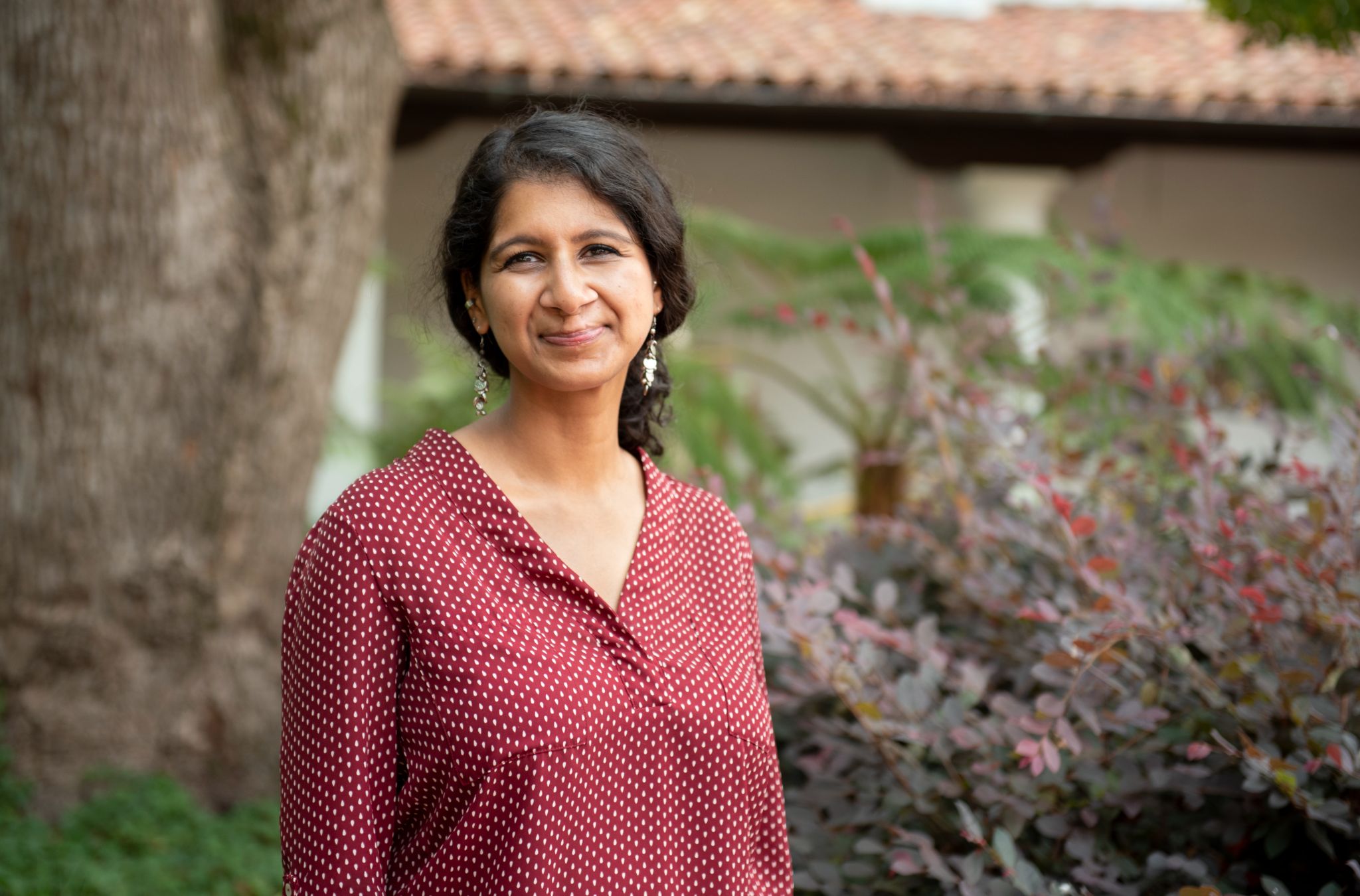
Dr. D’Costa’s project will bring together School Psychology scholars, practitioners, and graduate students in an eight-week learning collaborative to build anti-colonial practices in the K–12 education system.
Anti-colonial knowledge creation centers on the wisdom of minoritized voices and a process that is both collaborative and rooted in practical applications. “Beyond simply exploring critical content, we also seek to utilize a process of learning and dreaming that allows for change and growth,” said Dr. D’Costa.
The goals of the learning collaborative, she explained, are two-fold:
- To increase the knowledge base of practitioners, researchers, and graduate educators in school psychology so that they have a shared understanding of anti-colonial approaches to the field;
- To build stamina in the work of anti-oppression through the formation of an intentional community.
The Faculty Research Grant, Dr. D’Costa said, will be used to provide incentives for participants and to provide honorariums for Guest Scholars.
Dr. Robin J. Dunn, Kinesiology Department (School of Liberal Arts) – “Get Sportable: Using Sport to Integrate Students at Risk of Social Exclusion in School”
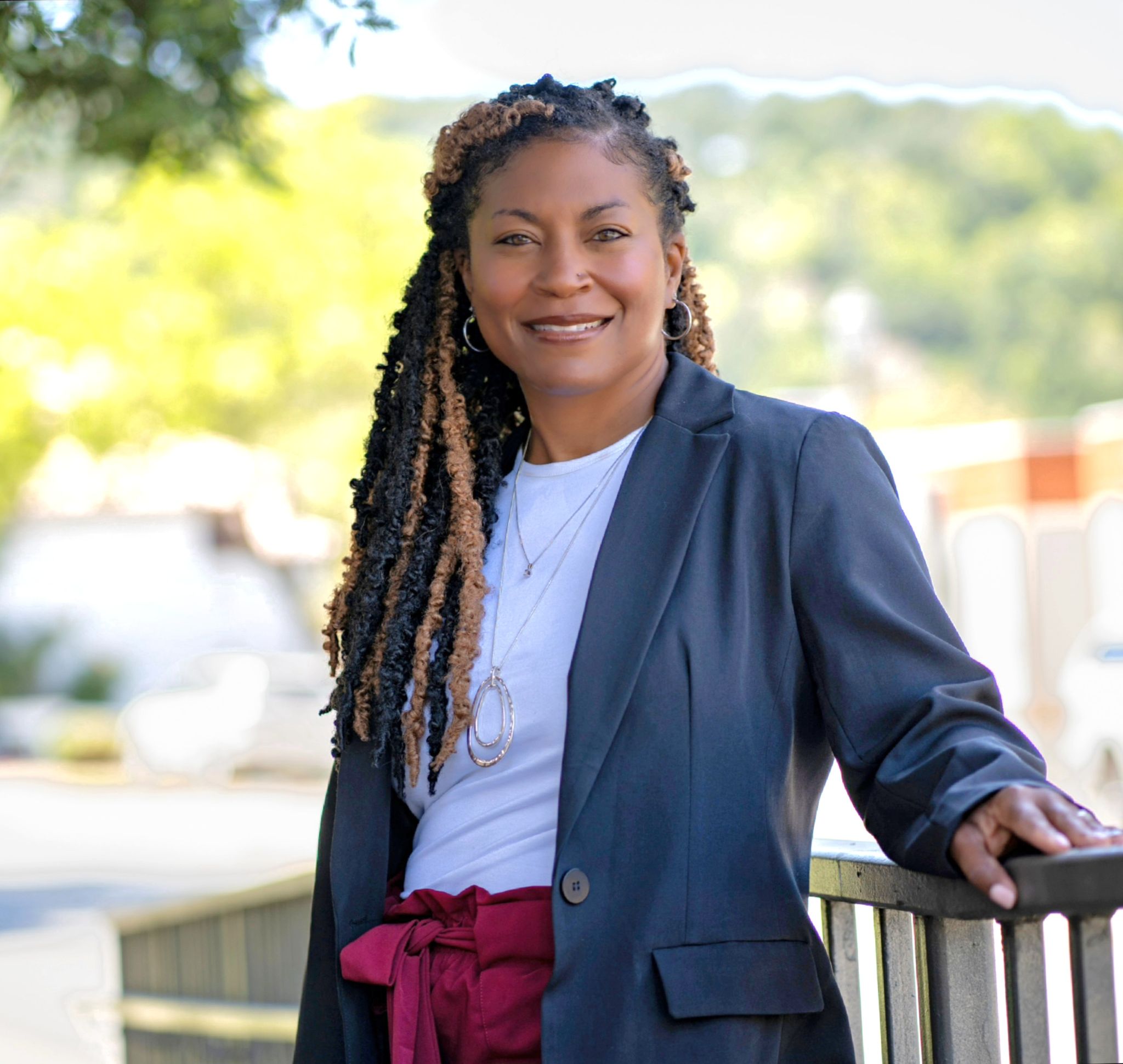
In partnership with the research group Salud, Actividad Física y Educación (SAFE) at the University of Murcia in Spain, Robin Dunn and her research team will design and implement an out-of-school program to explore the use of physical activity and sport to promote the integration of students at risk of social exclusion in school.
The researchers, said Dr. Dunn, will use a mixed method methodology that integrates a sport program with the Teaching Personal and Social Responsibility (TPSR) tool, a common curricular model used in out-of-school programs to promote positive youth development.
“Several measurement tools will be used to measure personal and social responsibility, social-emotional learning, motivation, and transfer of responsibility to real life circumstances,” she explained.
The Faculty Research Grant will support the opportunity to travel to Spain and engage in international collaboration on a shared research interest.
EXPLORE MORE: Read Part One and Part Two of our “Closer Look” series and learn about the work of eight exceptional Faculty Award winners at Saint Mary’s.
Learn more about Saint Mary’s College’s School of Economics and Business Administration; School of Liberal Arts; School of Science; and Kalmanovitz School of Education.
NEXT UP: Part Four of our “Closer Look” series will look at work by six more Faculty Research Grant recipients.